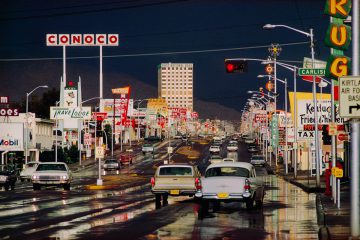ALL PRINT EDITIONS HAVE 2 A.P. AND 1 P.P.
To purchase prints please contact the Ernst Haas Estate
info@ernst-haas.com
| NEW COLOR COLLECTION : Pigment Transfer | ||
|---|---|---|
| SIZE | EDITION | PRICE |
| 11 x 14 inches | not editioned | $1,500 |
| 16 x 20 inches | 25 | $5,000 |
| 20 x 30 inches | 30 | $6,500 |
| 30 x 40 inches | 15 | $12,000 |
| 50 x 70 inches | 7 | $20,000 |
| CLASSIC COLOR COLLECTION : Pigment Transfer | ||
|---|---|---|
| SIZE | EDITION | PRICE |
| 11 x 14 inches | not editioned | $1,500 |
| 16 x 20 inches | 100 | $5,000 |
| 20 x 30 inches | 50 | $6,500 |
| 30 x 40 inches | 30 | $12,000 |
| 50 x 70 inches | 15 | $20,000 |

Route 66, Albuquerque, New Mexico 1969
| ROUTE 66 : Pigment Transfer | ||
|---|---|---|
| SIZE | EDITION | PRICE |
| 11 x 14 inches | not editioned | $1,750 |
| 16 x 20 inches | 100 | $6,000 |
| 20 x 30 inches | 50 - SOLD OUT | $13,000 |
| 20 x 24 inches | 100 | $8,000 |
| 30 x 40 inches | 50 | $18,000 |
| 50 x 70 inches | 15 | $50,000 |
| CLASSIC B&W COLLECTION : Silver Gelatin Prints | ||
|---|---|---|
| SIZE | EDITION | PRICE |
| 11 x 14 inches | not editioned | $1,750 |
| 16 x 20 inches | varies | $5,000 |
| 20 x 30 inches | varies | $8,000 |
| 30 x 40 inches | 15 | $16,000 |
DYE TRANSFER PRINTS BY SPECIAL REQUEST
CLASSIC COLOR COLLECTION images are also available through special request as dye transfer prints, a handmade printing process, now discontinued. This was the process preferred by Haas. As there is only a limited amount of materials left to produce them, most of the Haas dye transfer editions will not reach their full capacity.
What is a Dye Transfer Print?
Introduced in 1946, dye transfer is the finest color printing process in the history of photography. Upon viewing a superbly crafted dye transfer one is struck by its internal luminosity, vibrancy of color, and depth of tone.
The colorants produce an amazingly wide spectrum of colors, defining the largest color space of any process in existence. The extremely long tonal scale of dye transfer retains detail in both bright highlights and dense shadows.
Dye transfer is the only continuous-tone color process yielding prints on a fiber-base. Prints may be displayed for many decades without fading, and have a dark storage stability of over 500 years. In skilled hands the process is uniquely versatile, as the colors are individually controllable for color balance, contrast and density.
How they are made:
Separation negatives are made from an original transparency through red, green, and blue filters onto black and white panchromatic film. Each of the three separations is a record of one of the three primary colors of the original. Various masks are also made for color correction, highlight and contrast control.
Matrices are made to the final print size from the three separation negatives. Each of the matrices is a record of the cyan, magenta or yellow of the original. The prints are made by first soaking the three matrices in corresponding trays of cyan, magenta and yellow dye. They are then successively removed from their dye bath, rinsed, and rolled into contact with double weight paper. After approximately 10 minutes the dye transfers to the surface of the paper. Three transfers make a print. During the printing phase extensive control may be exercised over color balance, contrast and density.
Vintage Prints
A vintage print is a print that was made close to the time the photograph was taken.
Ernst Haas did not make many prints during his lifetime. Aside from two portfolios, The Creation and Flowers, there are few vintage prints remaining of his black-and-white and color work. Haas believed his most important contribution to be the collection of 350,000 transparencies and negatives that reflect his vision of the world through 40 years in photography. He used his income to pursue his interests by traveling the world for his books, personal projects and audio-visual presentations. During his lifetime, color prints were not sought after by galleries or collectors. The prohibitive price of manufacturing dye transfers was also a deterrent.
